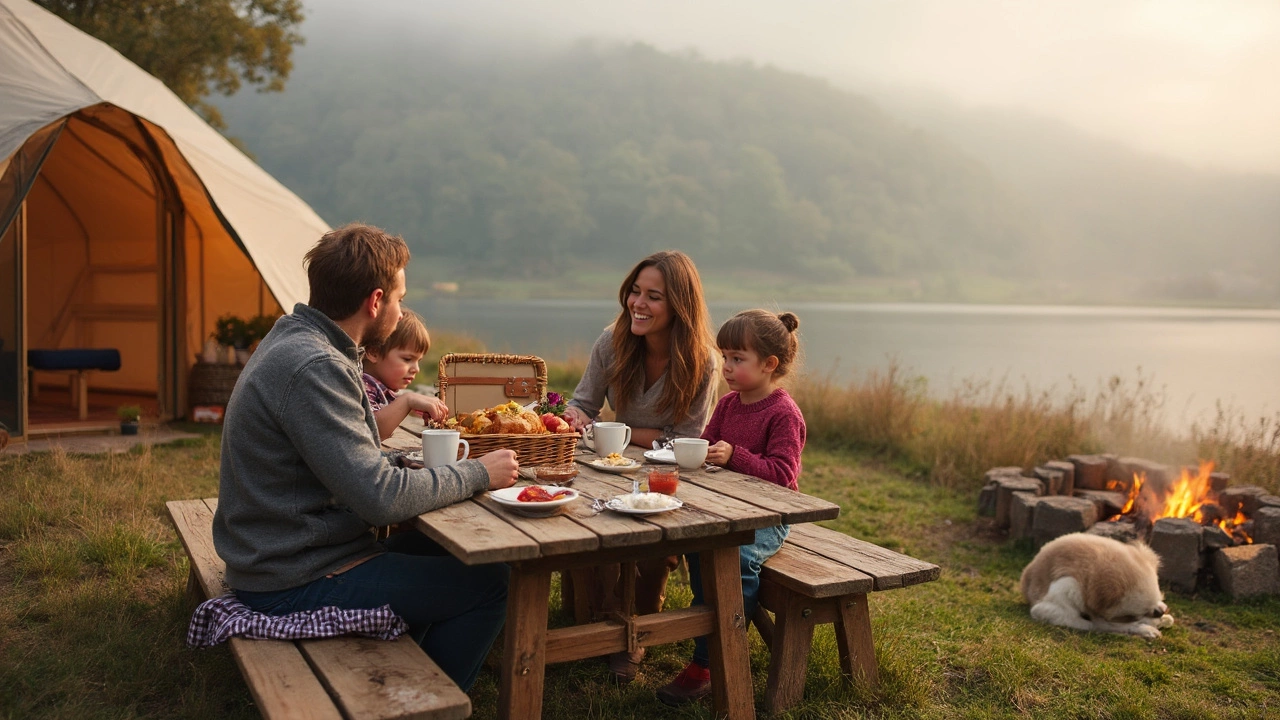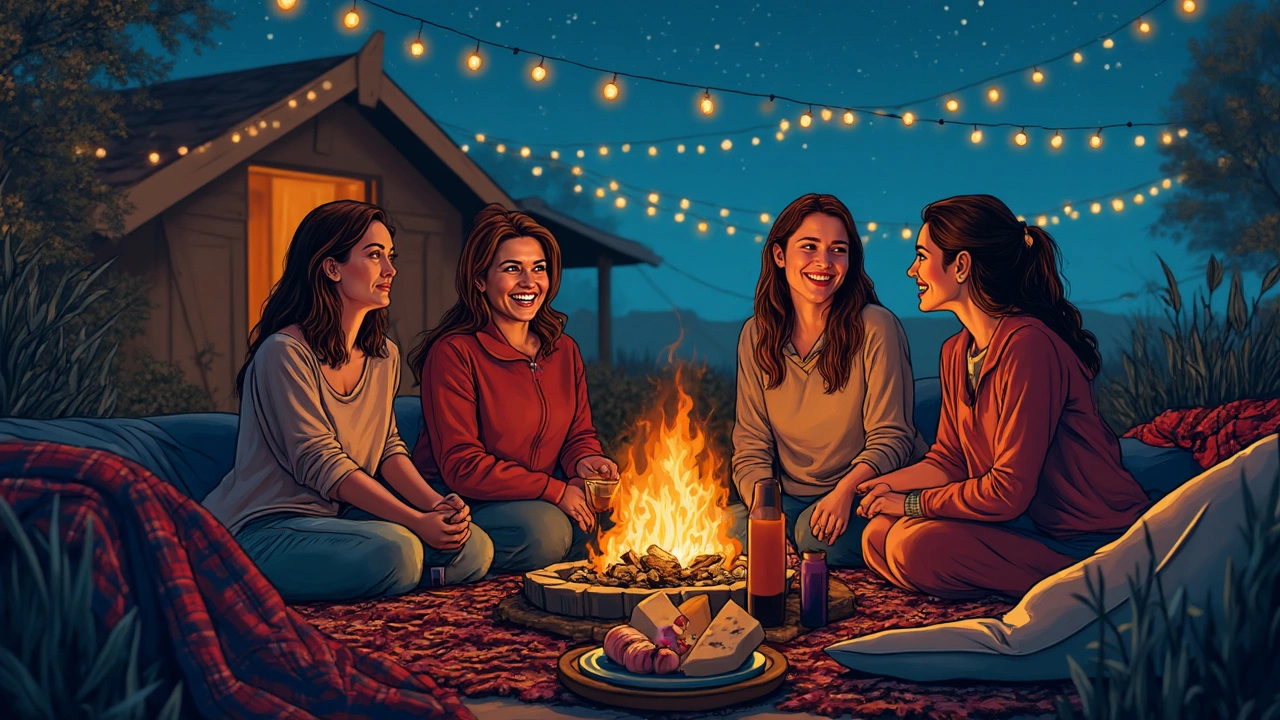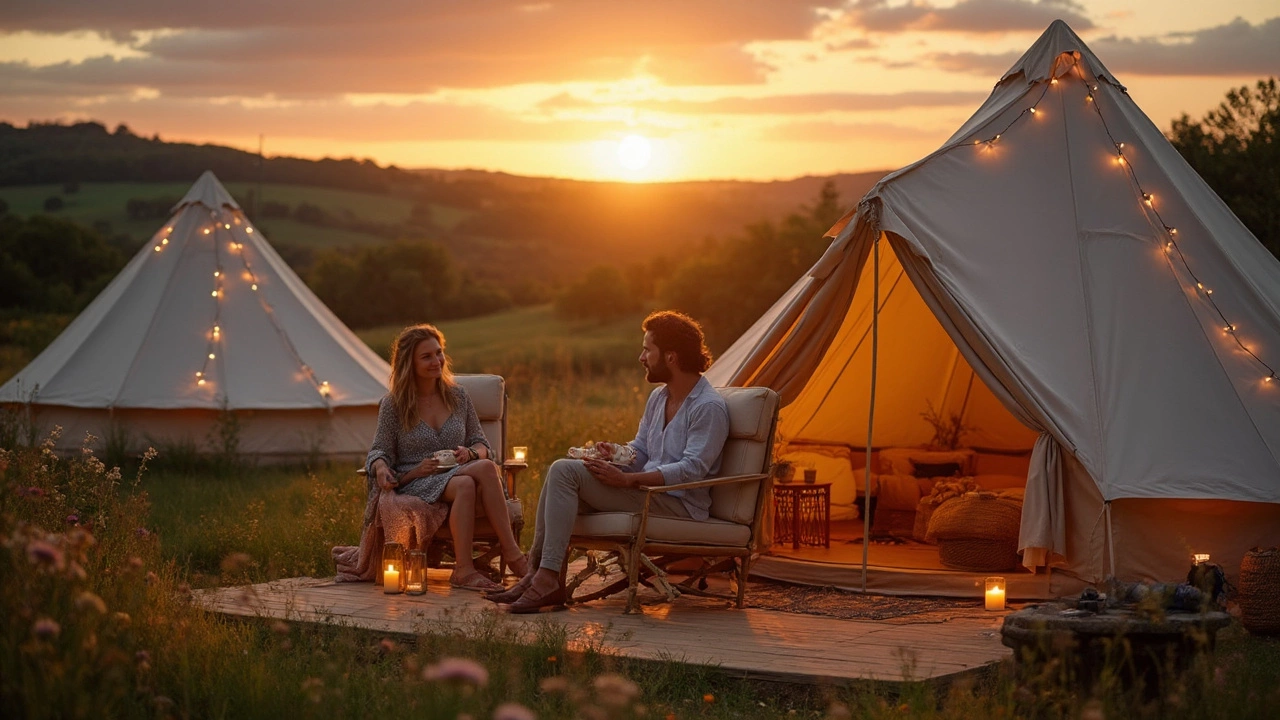Camping. Some love it, others avoid it like an icy river crossing. Picture this: muddied tents flopping in a gusty wind, cold ramen, and a restless night as rocks poke your spine. Now, add undisturbed sleep in a plush bed, private bathrooms, and a cooked breakfast delivered to your fancy yurt or safari tent. This is glamping—the golden child of the travel world. But what’s the real point? Is it for campers seeking more luxury, or city slickers wanting a taste of the wild without diving in face-first?
How Glamping Bridges the Wilderness and Comfort Gap
Most people want to connect with nature, but not everyone’s willing to sacrifice hot showers, soft beds, or decent coffee. Traditional camping can end up feeling like a test of endurance: wet gear, sandflies, dodgy knees, and burnt sausages. Glamping, on the other hand, goes all in on ease and style. You can wake to birdsong in a treehouse suite, let the sun in through canvas walls, then shuffle to your private ensuite and order breakfast. No more desperate sprints to the communal bathrooms at 2 am or cooking noodles in the dark while holding a torch in your teeth.
It’s not about being lazy or ‘cheating’—it’s about priorities. Maybe you work late nights and your weekends are precious. You want to switch gears, unplug, and enjoy the outdoors but with the option of a power nap on a real mattress. In New Zealand, glamping sites range from luxury domes with ocean views (check out Waiheke Island’s domes) to off-grid eco-pods in the mountains. Auckland has seen a 60% rise in booked glamping stays since late 2023, according to Stats NZ. This tells you people are craving comfort with their stargazing.
Some worry that glamping ruins the authenticity of camping. But ask yourself—whose rules are we following? Adventure doesn’t have to mean roughing it out or carrying everything on your back. Glamping lets grandparents experience real nature without the struggle. It’s an equaliser. There’s no badge for suffering through an air mattress leak in the rain. If lounging by your wood stove with Wi-Fi in a treehouse lets you unwind and connect, that’s a win. Nature stays the star of the show. You’re just watching from the best seat.
Glamping can also open the wilderness to folks who aren’t keen—or able—to bush bash. People with mobility issues, or little kids, don’t want to trek kilometers to pitch a tent. Add-ons like accessible tents, showers, and gourmet food mean families or less-experienced campers can bond over fireside marshmallows, minus the prep and hassle. When you’re cozy, your brain can actually relax enough to notice the birds, the wind, the slow sunset. Comfort invites mindfulness, not distraction.
Of course, glamping isn’t just about bedding and bathtubs. Some sites offer luxury extras like private hot tubs overlooking rolling hills, on-site yoga instructors, or en suite baristas. That said, plenty of glamping is low-key and eco-conscious, not all Champagne and crystal chandeliers. Think tiny homes powered by solar, composting loos, and outdoor fireplaces. Four walls—or even canvas and poles—won’t shield you from the sound of rain on the roof or a kereru thumping past at dawn.

The Real Reasons People Choose Glamping Over Camping
The honest answer? Convenience. You can arrive with just a backpack and a good book, and the rest is sorted for you. Forget tent poles, kindling, or leaky air beds. Show up, flop down, and recharge. It lets busy people get their nature-fix quickly. For urbanites with tight holidays or zero camping skills, glamping opens a door that might otherwise stay shut.
Another big draw is the memory-making factor. You’re not just camping—you’re sleeping under the stars in a geodesic dome or a Hobbit hole (yes, real ones, especially around Matamata). Couples celebrate birthdays or anniversaries with candle-lit forest dinners. Friends sip mulled wine in treehouses. Even families who normally avoid camping leave with stories—not of soggy sausages, but of glowworms above their bed. Instagram may have helped the glamping trend explode, but those filtered shots often tell a true story. People value experiences, and glamping is photogenic, unique, and comfort-forward.
Some travelers are motivated by sustainability. You cut down on flight emissions by choosing a close-to-home glamp and skip all that single-use camping gear. Luxury doesn’t always mean wasteful. Plenty of glamping sites choose local timber, compost toilets, recycled furnishings, organic food, and solar panels. You can stay on a sheep farm in the South Island, with dinner cooked over native wood, and feel the world slow down a bit. Nature stays front and center, but with a plush duvet instead of a sleeping bag zipper in your face.
Plus, glamping sites usually sit in mind-blowing locations that don’t have hotels nearby—think clifftop pods, mountaintop domes, remote riversides. Only glamping lets you watch the southern stars from a glass igloo or soak in a vintage clawfoot bath on a farm with no neighbours in sight. Some glampers say that the real magic is the way comfort helps them appreciate little details: birdsong, wildflowers peeking through long grass, the thrum of twilight insects. No wrestling rain covers or hunting for dry socks—it’s all about being present.
Want to get the most from your glamping trip? Arrive early so you can explore the surroundings in daylight. Pack light—most sites provide everything you need, from firewood to marshmallows. Bring layers, a book, and a sense of curiosity. Disconnect your phone if you can. Some hosts offer nature walks or birdwatching, so ask for their tips. If you pick an eco-glamp, bring your own biodegradable soap and avoid leaving any trace. Want to up the wow factor? Pick a place with a private hot tub—New Zealand’s mineral tubs are legendary. Or try glamping in winter for the best stargazing from a hot outdoor bath.
Glamping is also great for solo travellers. Safety is often top of mind, and glamping sites usually offer secure, private spaces with hosts nearby—way less hassle than remote camping. You can enjoy the wild but still have help if you accidentally set your dinner on fire (it happens, trust me).
Maybe the best-kept secret: glamping can encourage non-campers—your picky partner, or city-raised friends—to tag along. Take it from experience: if someone’s first foray into nature isn’t miserable, they’re more likely to join you next time. Glamping builds confidence, lowers stress, and might even turn a confirmed hotel person into someone who wakes early just to watch tui song in the kōwhai trees. People change their whole perspective after one good night’s sleep under a canvas roof, minus the hassle.

Is Glamping Really Worth the Fuss?
Let’s be real—glamping isn’t cheap. A weekend at a high-end pod or yurt can rival a boutique hotel stay, with rates that sometimes climb past $400 NZD per night in peak season. So what justifies the price? It’s less about gold-tap bathrooms and more about experience. You’re not just paying for a bed; you’re paying for the silence, the scenery, the feeling you’re part of the landscape, not just passing through.
Glamping’s value comes from access to wild places—often private land—plus the know-how of local hosts. Forget standard check-in desks or copy-paste holiday parks. Glamping hosts are passionate—they’ll share stories, bring you fresh eggs, tip you off to hidden swimming holes or the best wine trails. You’ll taste more of what makes each spot unique. It’s not just Instagrammable cabins; it’s meaningful connection with place and people.
Many glamping pioneers started as campers who wanted to share the joy of the outdoors without the stress or aches. I spoke to the founder of PurePods in Canterbury, who said it’s all about “removing barriers” so more people can be moved by wild places. Their glass-walled pods are made so you see dawn till dusk, weather and landscape, unfiltered. And you sleep soundly, because there’s double glazing and a proper bed underneath you.
Of course, there’s still an element of adventure—nobody can control the weather. Sometimes a storm rolls in and you find yourself tucked up watching thunder from your dome, or your marshmallows toast extra slow in the drizzle. But isn’t that the best part? The outdoors with a safety net. Glamping gives you the thrill of nature with a dash of civilization. You come home sun-kissed (or slightly muddy), but definitely not grumpy from cold beans and a bad back.
If you’re weighing up your next escape, ask yourself: am I searching for true connection, soothing comfort, or a bit of both? Glamping might be the answer. You can chase northern lights in a Finnish glass igloo or wake to sunrise over Aotearoa’s bush, all with hot water and a real pillow. Not everyone wants to spend days on a tramping track. Some want a shortcut to joy, to awe—and glamping is the bridge between city and stars.
At the end of the day, glamping’s magic is simple. It lets you tune in, slow down, and swap the hard ground for luxury without losing the wild at heart. That’s the point—ease, immersion, and maybe a little taste of adventure, no matter who you are or how you travel. Isn’t that what we’re all looking for?
